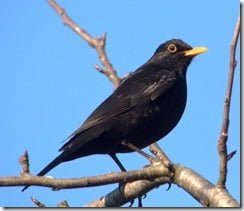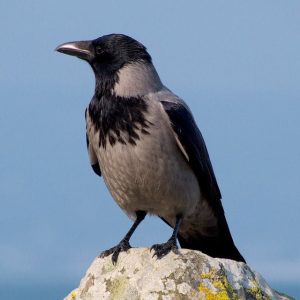 The languid flight of the hen harrier, gliding with wings held in its characteristic shallow V, has become a rare sight in Ireland. Historically one of our most persecuted birds of prey, the hen harrier’s habit of taking free-range domestic fowl (which led to the bird’s common name) did little to endear it to poultry keepers, and many were shot. Hen harriers also fell foul of the gamekeepers gun in areas where their upland breeding range overlapped with managed game-bird habitat.
The languid flight of the hen harrier, gliding with wings held in its characteristic shallow V, has become a rare sight in Ireland. Historically one of our most persecuted birds of prey, the hen harrier’s habit of taking free-range domestic fowl (which led to the bird’s common name) did little to endear it to poultry keepers, and many were shot. Hen harriers also fell foul of the gamekeepers gun in areas where their upland breeding range overlapped with managed game-bird habitat.
In more recent times habitat degradation and falling prey populations have contributed to the hen harriers continuing decline. The species is now listed in the red category on the Birds of Irish Conservation Concern (BoICC) list, a document jointly compiled by Birdwatch Ireland and the Royal Society for the Protection of Birds Northern Ireland, and is in real danger of extinction here.
Hen harriers are slim, elegant raptors with a body length of some 43-52 cm (c. 17-20.5 inches), a wingspan of between 99-121 cm (c. 39-47.5 inches) and weigh around 0.3-0.53 kg (0.7-1.2 lb). The feathers of the face are arranged into two disks that channels sound waves backwards to the birds ear, allowing it to detect the movement of prey in the undergrowth. Adult male hen harriers are pale grey above with black tips and a smoky trailing edge to their long wings and a distinctive white rump. Females and immature birds are generally brown in colour, but share the male bird’s white rump and have a heavily barred tail – a characteristic that has earned them the nickname “ring-tails”. Male and female immature birds look similar, but when seen together they can be distinguished by size, as males are significantly smaller than females.
Hen harriers spend the breeding season in upland habitats, especially favouring heather moorland and areas of wild scrub. Immature forestry plantations also offer good breeding and hunting grounds for the birds, and at face value appear to be a good hen harrier habitat. However, unlike more consistent traditional habitats, forestry plantations mature, and as the canopy closes they become unsuitable for the harriers, forcing established breeding pairs to move on.
Harriers arrive at their upland breeding grounds from late march and stay until August or September. At the start of the breeding season the male hen harrier performs a breathtaking tumbling, somersaulting display that involved plummeting towards the ground then rearing up almost vertically before dropping suddenly again. This can happen several times in quick succession.
Nesting begins from about mid may. Hen harrier nests are shallow depression on the ground in low vegetation. The female lays 4-6 pale blue eggs from April to June and incubates them for about 30 days. Young harriers leave the nest after 29-38 days, but continue to be fed by their parents for several weeks while they perfect their own hunting skills. Hen harriers have one brood per year, although male birds may breed with and support more than one female.
Harriers feed on small birds and mammals, and occasionally reptiles, amphibians and large insects. They hunt by flying low over the ground, quartering their territory using their exceptional hearing and sight to detect any sign of prey. Once they spot a likely meal they swoop in for the kill.
In winter harriers can be seen hunting over a much wider variety of habitats, and frequent coastal marshes, farmland, fens and river valleys. Over the winter months they sometimes gather at communal roosting sites of 10-20 birds, and sometimes many more. A study by Duchas in 2000 estimated that there were just over 100 breeding pairs of hen harrier in Ireland.









8 comments
Kevin Malone
Spotted a ? HH near Kinvara perched on a post as I cycled up a hill 5k from the village in Ardrahan road near farmland 16/12/23. It was beautiful as it flew away as I got closer, no time to get camera out.
Niall Flaherty
We have a bird with that lovely floating harrier behaviour hunting along the coast at Oranmore. I thought it might be a sparrow hawk but am wondering now if it could be a hh. Size and colour sounds right. Hard to get a close look, but my wife passed it perched on a wall and said it was quite brown. I’d say 12 inches long. It seems to be hunting field mice near the shore. When it hunts it attracts the ire of local crows that buzz it to move it on.
john cogan
hi calvin, i had the great fortune to spend a half hour watchin what i think was a hen harrier pluck a pigeon it had brought down.i was in a trax machine so it didnt fly off. i have seen her around my farm on many ocasions and even spotted her roosting in one of my sheds i never seem to have a phone or a camera with me when i need one. i live near Blarney co cork
Lily de Sylva
Hi Calvin, we have a mystery bird (or possibly pair of) in my neighbourhood, and I’m wondering if it might be a Hen Harrier. Unfortunately, I haven’t managed to get a good enough look at it to clearly define markings. The size and behaviours sound right… it’s taken lots of hens from local gardens, and there is a new woodland plantation nearby that may have attracted them. However, I observed it the other day hovering, very like a kestrel (it wasn’t a kestrel, much too big). Do Hen Harriers hover in this way… or do you have another suggestion for our mystery guest? We are in North Tipperary, and have no fear, no-one is talking about harming the birds, they’re just improving security on their poultry runs!
James Marshall
Hi Calvin, If I sent you a pic of a Raptor I took yesterday, could you identify it for me ??? Thanks James
Calvin Jones
Hi James… I could try. Email me on calvin at irelandswildlife.com.
Scribhneoir
We were wondering about the pair of birds we have been seeing on our hill in Leitrim was, we suspected hen harrier, now I am certain having read this. My partner got to see the strange tumbling flight of the male and had mentioned it to me – it’s nice to have an explanation.
There has been a pair on this hill for a number of years and then for a year we hadn’t noticed them, it’s great to see a pair back here again.
Calvin
Thanks Scribhnoir… glad the article helped. I’ll be posting more species profiles over the coming weeks.
Hen harriers are fabulous birds, and are pretty scarce, so you’re lucky to have a pair nearby. Actually, I have an email address for a guy doing hen harrier research with the NPWS… I’ll e-mail you the details in case you’d like to submit details.